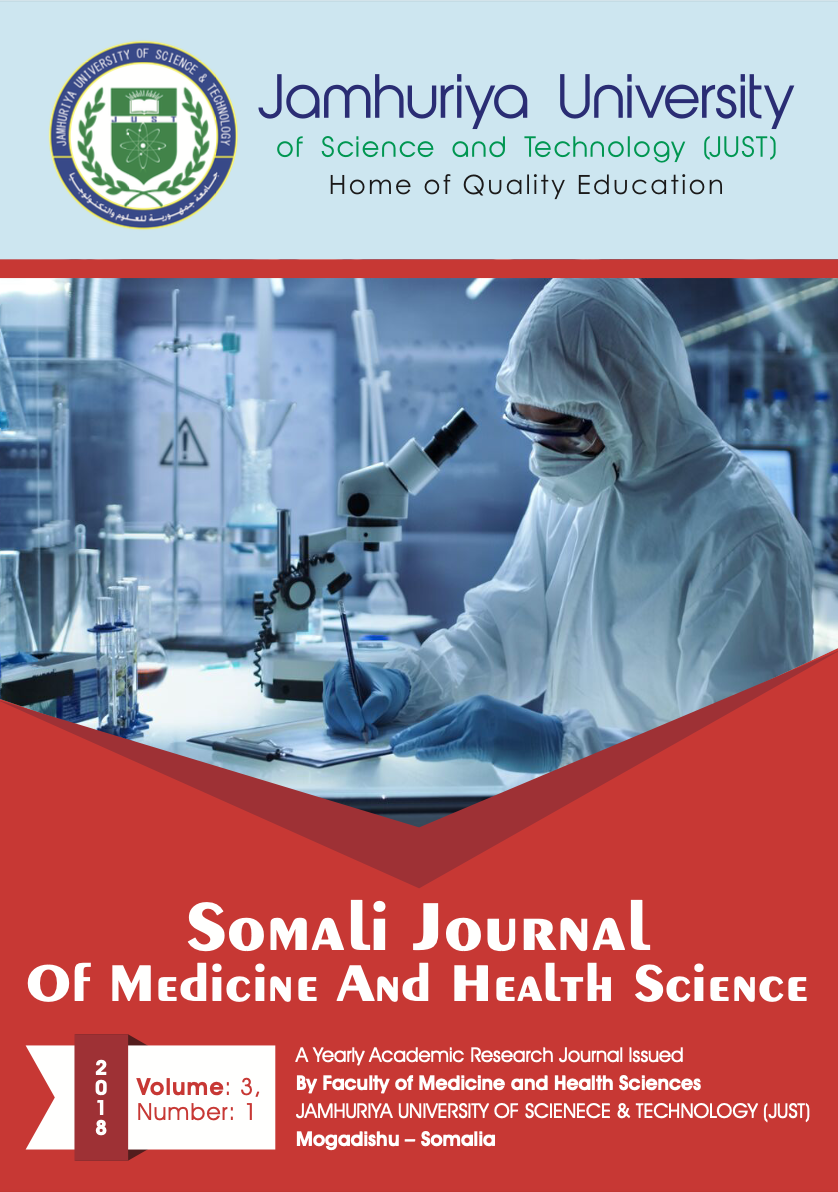Evaluation of the Availability of Safe Water and Sanitation Facilities in IDP Camps In Kahda District in Mogadishu, Somalia
DOI:
https://doi.org/10.59067/afjhms.v3i1.37Keywords:
WASH, Evaluation, AvailabilityAbstract
Water, Sanitation and Hygiene (WASH) is generally a challenge in Somalia particularly in IDP settlements where access to water and sanitation facilities is limited. Children particularly the ones under the age of 5 years mostly fall victim to diseases caused by poor sanitation and hygiene practices. The objective of this study was to evaluate the availability of safe water and sanitation facilities in IDP camps Kahda district Mogadishu Somalia. The study was descriptive cross-sectional baseline assessment. The study area was selected purposively 4 IDPs camps in Kahda district and the sample size was 166 households, draw from 270 households from selected 4 IDPs using Cochran’s formula for calculating sample size when population size is finite. Administrated closed-ended questionnaire and observational checklist was used as data collection tools and the study employed statistical package for social science SPSS version (20.0) for data analyzing and data was present descriptive statistics graphs and frequencies tables. Majority of the households 84 (51.5%); their source of water were hand dug well with pump as well as Most of the households 100 (61.3%); it takes 3km walk to get a water from their nearest point source while the guide to WASH cluster strategy and stander states that the maximum distance from any household to the nearest water point should be 500 meters. Which means it is longer than the stander and 61 (37.4%) households they bring 1 dollar per day to get water, 52 (31.9%) they bring less than $0.5 per day so that it is one factor that may affect the availability of safe water and sanitation, whereas A very large number of households 105 (64.4%) don’t treat their drinking water to improve the quality of water and The study also founded that 21 (12.9 %) of the households do not have latrine and 153 (93.9%) of the households share latrine with their neighbor and most of these households 57 (35%) they share latrine with 5 households and above, 37 (22.7%) they share latrine with 4 households, while the highly average 117 (71.8%) of the households do not wash their hands after using toilet. The study was done and it proves that the water source is far from and longer three times more than the standard, the quality of drinking water is not good and the knowledge of the dwellers for the treatment of drinking water needs to improve. Some of the households don’t have latrine and they share with their neighbor. the study recommends Federal Ministry of health and social welfare, local and international nongovernmental organization and authorities concerned with constructing water source near IDPs, conducting health promotion campaign for drinking water treatment and hygiene and constructing toilets.


